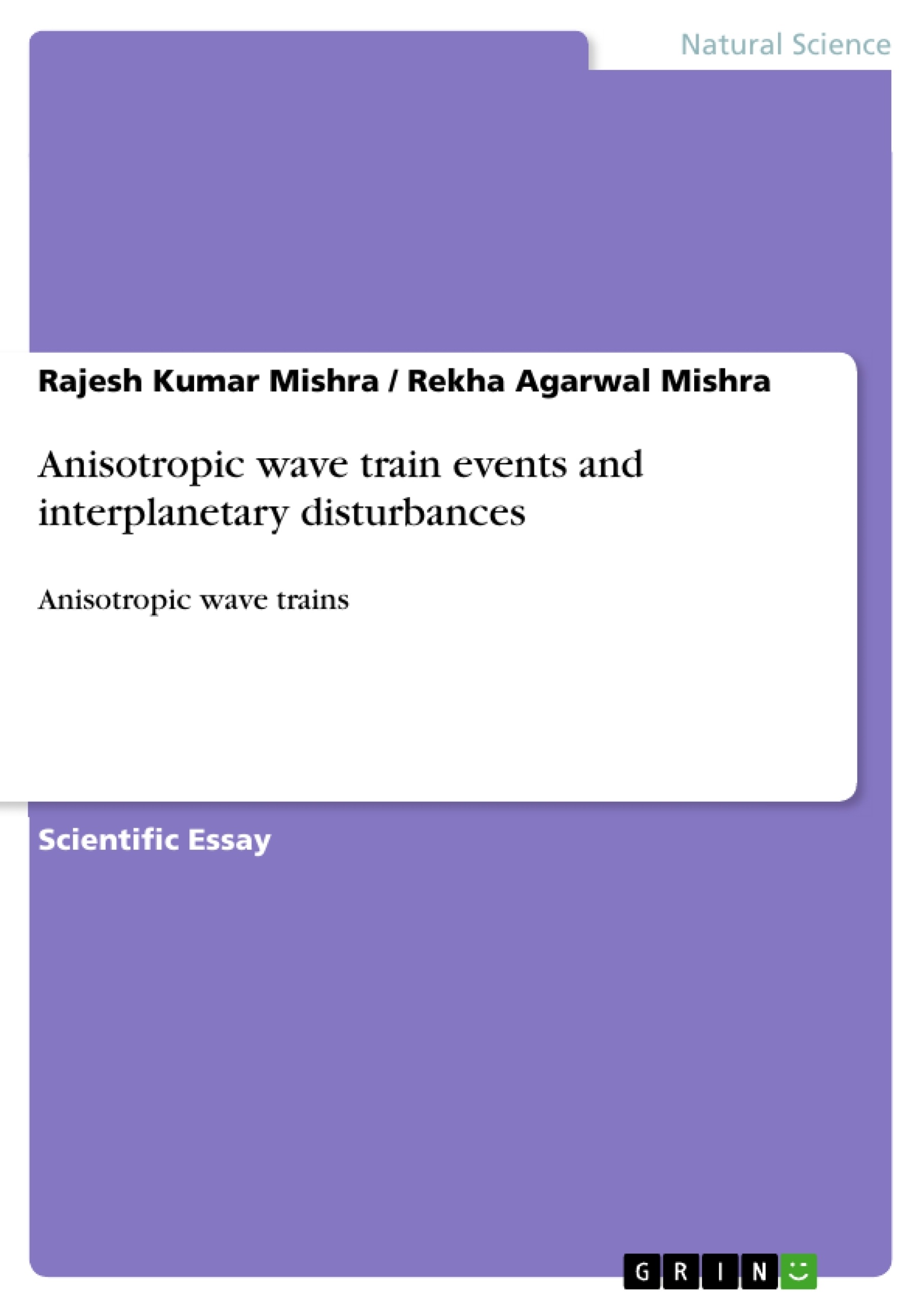This work aims to investigate the phenomenon of unusual variations in cosmic ray intensity in the period 1981-1994, particularly in the context of interplanetary magnetic clouds and low-amplitude anisotropic wave trains.
The text provides a detailed analysis of the relationship between low-amplitude anisotropic wave trains and interplanetary perturbations, particularly with respect to changes in cosmic ray intensity. By analysing data from the Deep River Neutron Monitor, the interaction between high solar wind velocities, the orientation of the interplanetary magnetic field and the proton density is highlighted.
Inhaltsverzeichnis (Table of Contents)
- Abstract
- Introduction
- Data Analysis
- Results and Discussion
- Conclusion
- Acknowledgements
- References
Zielsetzung und Themenschwerpunkte (Objectives and Key Themes)
This study investigates the impact of interplanetary magnetic clouds on cosmic ray intensity variations, specifically focusing on low-amplitude anisotropic wave train events (LAE). The research aims to determine the role of these clouds in causing variations in cosmic ray intensity and understand the relationship between these events and other interplanetary parameters.
- The influence of magnetic clouds on cosmic ray intensity during LAE
- The relationship between solar wind velocity and cosmic ray intensity variations
- The role of interplanetary magnetic field (IMF) parameters in modulating cosmic ray intensity
- The correlation between LAE and geomagnetic activity indices
- The characteristics of LAE and their association with interplanetary disturbances
Zusammenfassung der Kapitel (Chapter Summaries)
- Abstract: This section provides a concise summary of the study's objectives, methodology, and key findings.
- Introduction: This chapter introduces the concept of LAE and provides background information on previous research related to cosmic ray intensity variations and their relationship with interplanetary disturbances, particularly magnetic clouds.
- Data Analysis: This chapter describes the data sources and methods used to analyze cosmic ray intensity data, including the Deep River Neutron Monitor and interplanetary parameters. It explains the selection criteria for LAE and details the data analysis techniques employed, such as Fourier analysis and the superposed epoch analysis.
- Results and Discussion: This chapter presents the findings of the study, focusing on the relationship between LAE, magnetic clouds, solar wind parameters, and cosmic ray intensity variations. It discusses the observed correlation between LAE and geomagnetic activity indices and analyzes the influence of interplanetary shocks and turbulent sheaths on cosmic ray intensity decreases.
Schlüsselwörter (Keywords)
The key terms and concepts explored in this study include cosmic rays, solar wind, interplanetary magnetic field (IMF), magnetic clouds, geomagnetic activity, low-amplitude anisotropic wave train events (LAE), Forbush decreases, superposed epoch analysis, and diurnal anisotropy.
- Arbeit zitieren
- Rajesh Kumar Mishra (Autor:in), Rekha Agarwal Mishra (Autor:in), 2023, Anisotropic wave train events and interplanetary disturbances, München, GRIN Verlag, https://www.grin.com/document/1434252



